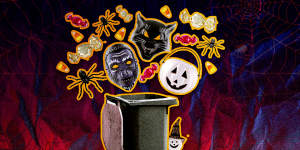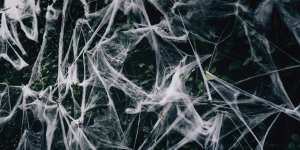
How to combat waste this Halloween.Aresna Villanueva
Nina Gbor,circular economy and waste program director at The Australia Institute,sees the increasing popularity of Halloween in Australia as part of the growing influence of American traditions and holidays. Social media,she says,also compounds this obsession. Gbor notes that while our biggest period of overconsumption has traditionally started on Black Friday and continued through to the January sales,it’s now starting earlier,in the lead up to October 31.
And while there’s no data on the amount of waste generated from Halloween in Australia yet,research abroad can provide some insight. A estimates that half of pumpkins will be carved,but not eaten this Halloween – eventually becoming food waste – while research from the US expects Americans to spend alone.
Get kids involved
Children can be susceptible to what they see on social media or what they hear in the schoolyard,but Gbor says it’s important to start teaching children sustainable habits young.
“What’s great is that children are really receptive to ideas,especially when you make it fun,” she says,encouraging parents to get kids involved in making their own decorations,treats and costumes.
Lottie Dalziel,founder of Banish,an education platform and recycling branch for hard to recycle household items,says parents of children of different ages should also focus on purchasing quality costumes that can be passed down year after year.
Get creative
Gbor encourages people to get creative with their Halloween rituals. “It originates from Irish Celtic traditions over 2000 years ago,but the original intentions are long lost. We can actually make it into whatever we want it to be.”
See how creative you can get with what you already have on hand,challenge yourself to have an “op shop” Halloween or try your hand at a DIY project.
And beware the decorative fake spiderwebs – they’re a death trap for birds,bees and other wildlife. A DIY yarn spiderweb (for which there are many free internet tutorials) is a more environmentally friendly alternative.

Go for quality and avoid single-use items
“When it comes to kind of key events like this,we’re lucky they happen every single year,” says Dalziel. “So when I’m shopping for my Halloween kit,I’d be trying to get things that are going to last the length of time.”

Birds and other wildlife can become ensnared in fake spiderwebs.iStock
When it comes to costumes,avoid the flimsy,synthetic costumes. One UK study found that were made from oil-based plastic. These costumes shed thousands of microplastics with each wash,and of course put even more plastic into landfill when discarded.
Go through your wardrobe and see what you have to work with,or hit up your local op-shop. Alternatively,consider hiring a costume.
If you’re hosting a Halloween party,avoid single-use plastics,and consider hiring plates and cutlery or buying from a local op-shop. is a not-for-profit that connects hosts with local party kits they can rent.
And glitter,while fun,is hard to clean up and can result in thousands of tiny pieces of plastic leaching into soil and waterways.
Reuse,recycle and compost where possible
If you’re making Jack-o’-lanterns,don’t let your pumpkin carvings go to waste – consider using them in a, or. And compost the shell once Halloween is over. If you don’t have your own compost bin or FOGO bin,organisations like connect people with neighbours already composting or worm-farming.
If you have used single-use plastics,Banish’s accepts select party supplies and single-use cutlery.
Engage your local community
Tapping into local community networks can be a great way to share resources and reduce waste. In the wake of,for example,Gbor says many schools are hosting costume swaps. Or why not message your local Facebook group to see if any neighbours have the decorations or clothing you’re looking for?
Finally,if you’re trick-or-treating,Dalziel suggests talking to other households about offering home-baked goods or lollies packaged in paper,rather than the traditional plastic-wrapped treats.
Make the most of your health,relationships,fitness and nutrition with our Live Well newsletter. every Monday.